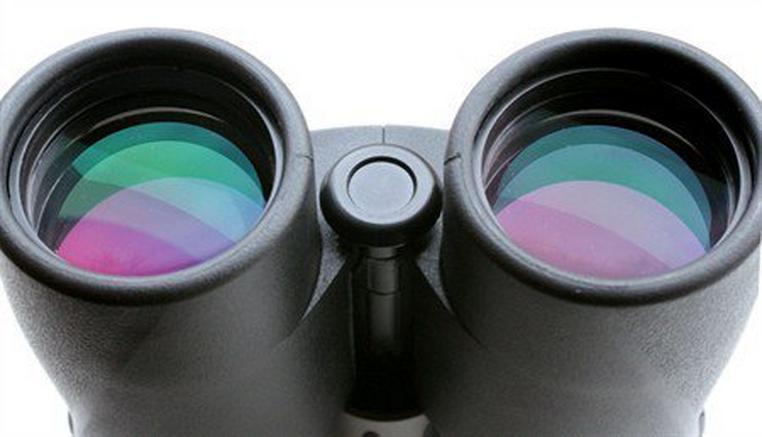Coating - Binoculars
The coating on a lens greatly affects the optical quality of the image and also the price of the binoculars. There are great differences between good and average binoculars as far as this is concerned.
A good coating guarantees crisper, brighter images and also clearer contrasts. For uncoated lenses approximately 4% of incident light perlens / air transition is reflected. Since an objective is comprised of a number of lenses, several of these air transitions are found in binoculars. Take, for example, binoculars with 7 glass elements per side (a 2-lens objective, 2 prisms and a 3-lens ocular - this is not an exceptional combination!), this would mean that only 56.5% of the light emitted by the objective actually reaches your eye. Using a simple coating, this loss is reduced to 1.5%, for instance. The amount of light reaching your eye has now increased to 80%. In a multi-coated objective, the lenses are coated with several layers and this yields greatly improved results. And bear in mind that all the 'false light' in the binoculars reduces the contrast of the image.
The product specifications may state that the binoculars are multi-coated. However, this does not automatically mean that all the glass surfaces have undergone this multi-coating treatment, although, in any case, at least some of the glass surfaces have been multi-coated.
Besides the optical features, the mechanical features of the coating are of importance. This, of course, mainly refers to the coating on the outer parts of the lens. Of course, the coating needs to be tough enough to withstand vigorous cleaning. No matter how tough the coating is, you must always take special care and use clean materials when cleaning your binoculars. Be careful not to use grainy cloths when cleaning your binoculars as this will cause scratches!
The coating greatly affects the brightness, contrast and colour rendition of the binoculars. It is therefore certainly worth paying careful attention to this!
It is simple to see whether the lens has been coated or not. Just look into the lens with a source of light behind you and slowly move the binoculars. If you see a blue colour cast, this means that the lens has been coated. If you see a greenish colour with a cast to other colours, then the lens has had at least two coatings.
A very special type of coating is known as phase-correctionor dielectric coating. In the case of roof prisms, part of the light shifts in phases (wavelength shift) and is polarised when it is emitted from the prism. This is caused by the optical construction of the prism. The light component is adversely affected and therefore so is the brightness of the image. This is something you would obviously want to avoid. Phase-correction coating on the roof prism will resolve this problem.
The type of glass used also greatly affects the quality of the contrast and image.
Another important point to consider is that the product description for cheap binoculars is not always fully accurate. For instance, binoculars described as fully multi-coated, are, in reality, may not really be fully-coated at all. Or, when described as having undergone coating treatment, you wonder whether the image quality has benefited from this or not.








